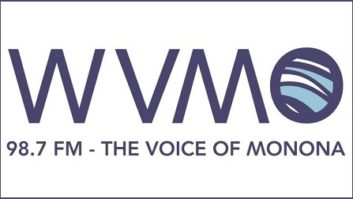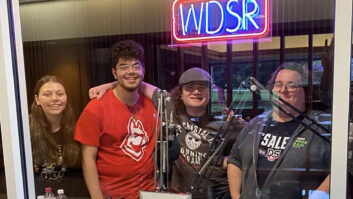This is one in a series of case studies in a special section of the Oct. 7 issue of Radio World called “Radio 2010: Traditional Solutions Blend With the New,” in which radio managers discuss how they are preparing for the next decade of the millenium by improving their businesses in traditional and nontraditional ways.

From left: Holly Gauntt, news director of KOMO(TV); Troy McGuire, VP of news/general manager of Fisher Interactive Network; Colleen B. Brown, president/CEO of Fisher Communications; and Satbir Khanuja, president and CEO of DataSphere Fisher Communications President and CEO Colleen Brown begins a conversation about her company’s media future by looking at its innovative past.
Fisher began 99 years ago in Seattle as a family owned flour mill. “They decided that an efficient way of marketing their products was to buy a radio station,” she said, which the company did in 1926.
Beginning with that station, KOMO(AM), the company grew to a broadcast group that owns and operates 13 full-power and seven low-power television stations along with eight radio stations in the western United States.
It was with an eye to continue that innovative past that Fisher’s Seattle cluster of radio and TV launched 43 local Seattle neighborhood Web sites in August.
“It was clear to us that there was a desire for more neighborhood connection with local businesses and local information,” said Brown. The Web sites bring together KOMO’s brand with an abundance of neighborhood local news and neighborhood advertisers.
She said Fisher did an in-house study that found 80 percent of the news stories submitted to their Seattle newsroom were too narrow in focus to put on TV or the all-news radio station’s air.
“So rather than just discard the information, for years now we and others have been looking for ways to use that information, to redistribute it to those folks who want that information.”
The neighborhood advertisers are equally important to the strategy. “We’ve created not only an innovative content development strategy that is scalable, but we’ve also developed opportunities for local businesses that don’t traditionally have the ability or wherewithal to cover the costs to advertise on either TV or radio,” said Brown.
She noted that in order to maintain 43 neighborhood news Web sites and integrate servicing them into the existing news department, Fisher needed to partner with an infrastructure provider. They chose the nearby DataSphere Technologies, with its LocalNet service designed to provide broadcasters as well as other local media companies a way to insert news content as well as to serve the local small business advertising market with technology as well as a sales team.
Brown pointed to one other structural change Fisher made to the Seattle broadcast properties: “We never experienced the value [of owning TV and radio in the same town] until we put in one general manager, flattening the organization, in charge of all distributions.
“Suddenly the walls have come down,” she said. “Creative ideas are good no matter if you’re TV, radio, Internet, it doesn’t matter.”
Among new technology Brown sees for the future is mobile DTV, where a television station devotes a small portion of its 19.2 Mbps digital channel to sending video and audio to mobile handsets and automobile receiving devices. Fisher’s Seattle KOMO(TV) is currently a testbed station, broadcasting the mobile signal to allow device makers to test their prototype receivers in the market’s challenging terrain.
“We know statistically mobile TV is the number-one consumer product that is desired but not yet offered,” she said.
Off on the horizon, Brown predicted that a listener or viewer will decide what content they want, and a device’s software will determine the best way to receive it, whether it’s over-the-air, cable, satellite, Internet or what-have-you. “It still comes back to your content, content is king, and how efficient are you at delivering it to the customer?”
— Craig Johnston












